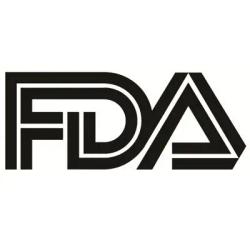
OR WAIT null SECS
Ophthalmology Month in Review: April 2025
April sees mixed outcomes in FDA approvals, with promising gene therapies advancing while others face setbacks, highlighting ongoing challenges in ocular treatments.
April was a month of ups and downs for regulatory news in ophthalmology. The US Food and Drug Administration (FDA) granted a Regenerative Medicine Advanced Therapy (RMAT) designation to ATSN-201 gene therapy. The FDA also accepted the Biologics License Application from Outlook Therapeutics for ONS-5010, a treatment for wet age-related macular degeneration (AMD).
On the other hand, the FDA issued a Complete Response Letter (CRL) for aflibercept 8 mg’s intended dosage extension. Reproxalap also received a Complete Response Letter; the FDA cited insufficient efficacy data in treating symptoms of dry eye disease (DED). Additionally, the failure of Opthea’s COAST trial for sozinibercept led to the cancellation of both COAST and ShORe trials and the development of sozinibercept altogether.
Multiple important studies were released throughout the month. Investigators in China indicated that the platelet-to-neutrophil ratio may be an effective method of identifying diabetic macular edema (DME) in patients with diabetic retinopathy. A cross-section of NHANES data suggested that the systemic inflammatory response index could successfully identify AMD. Topline results from the VVN461 trial suggested that the dual Janus kinase inhibitor and tyrosine kinase 2 inhibitor is successful in treating non-infectious anterior uveitis.
FDA Issues Complete Response Letter to Aflibercept 8 mg for Extended Dosing
After accepting an application for priority review of aflibercept 8 mg to treat retinal vein occlusion, the FDA issued a CRL to Regeneron regarding the proposal for extended dosing intervals. Although no issues were found with the safety or efficacy of aflibercept 8 mg, the FDA disagreed with the company’s proposal to add extended intervals greater than 16 weeks.
FDA Grants RMAT Designation to ATSN-201 Gene Therapy for XLRS
Halfway through the month, the FDA granted RMAT designation to ATSN-201 gene therapy, a first-of-its-kind treatment for X-linked retinoschisis. The treatment had previously been granted Fast Track, Rare Pediatric Disease, and Orphan Drug designations. With the RMAT designation, the FDA is now directly guiding the development of ATSN-201.
FDA Issues Complete Response Letter to Reproxalap for Dry Eye Disease
Aldeyra Therapeutics also received a CRL after the FDA determined that reproxalap did not display efficacy in treating DED symptoms. The New Drug Application (NDA) was based on the recent ALLEVIATE trial, which indicated the superiority of reproxalap over vehicle in treating ocular discomfort. Aldeyra announced that it intends to resubmit another NDA mid-year 2025.
FDA Accepts Biologics License Application for ONS-5010 for Wet AMD
Outlook Therapeutics’ resubmitted BLA for ONS-5010 – a recombinant humanized monoclonal antibody for the treatment of wet age-related macular degeneration – was accepted by the FDA on April 8th. The BLA was flagged as a Class 2 review, involving a 6-month review period from the submission date. A Prescription Drug User Fee Act (PDUFA) target goal date has been set for August 27, 2025.
Opthea Announces Termination of ShORe and COAST Trials of Sozinibercept
After sozinibercept failed to demonstrate vision improvements in the phase 3 Combination of OPT-302 with Aflibercept Study (COAST) trial, parent company Opthea announced the termination of both COAST and its sister trial, Study of OPT302 in combination with Ranibizumab (ShORe). Additionally, the company has ceased developing sozinibercept for treatment of wet age-related macular degeneration.
VVN461 Trial Topline Results Announced for Non-Infectious Anterior Uveitis
VivaVision announced this month that its trial for VVN461, a combination Janus kinase inhibitor and tyrosine kinase 2 inhibitor, had successfully achieved its endpoint in treating non-infectious uveitis. Although the company has not submitted the drug for approval in the US yet, they plan to request a Type C meeting with the FDA and eventually hope to submit a BLA for the medication.
Systemic Inflammatory Response Index Predicts Macular Degeneration
A cross-sectional analysis of data from the National Health and Nutrition Examination Survey (NHANES) suggested that the systemic inflammatory response index can successfully identify AMD. A cost-effective, non-invasive method of diagnosing a debilitating disease, the index can provide a much more straightforward measurement.
Platelet-to-Neutrophil Ratio Associated with Predicting DME
Another cross-sectional study from China indicated that the platelet-to-neutrophil ratio can serve as a diagnostic biomarker for diabetic macular edema in patients with diabetic retinopathy. PNR is already a widely used biomarker for acute ischemic stroke, hemorrhagic transformation, and Graves’ orbitopathy.
Related Content:


